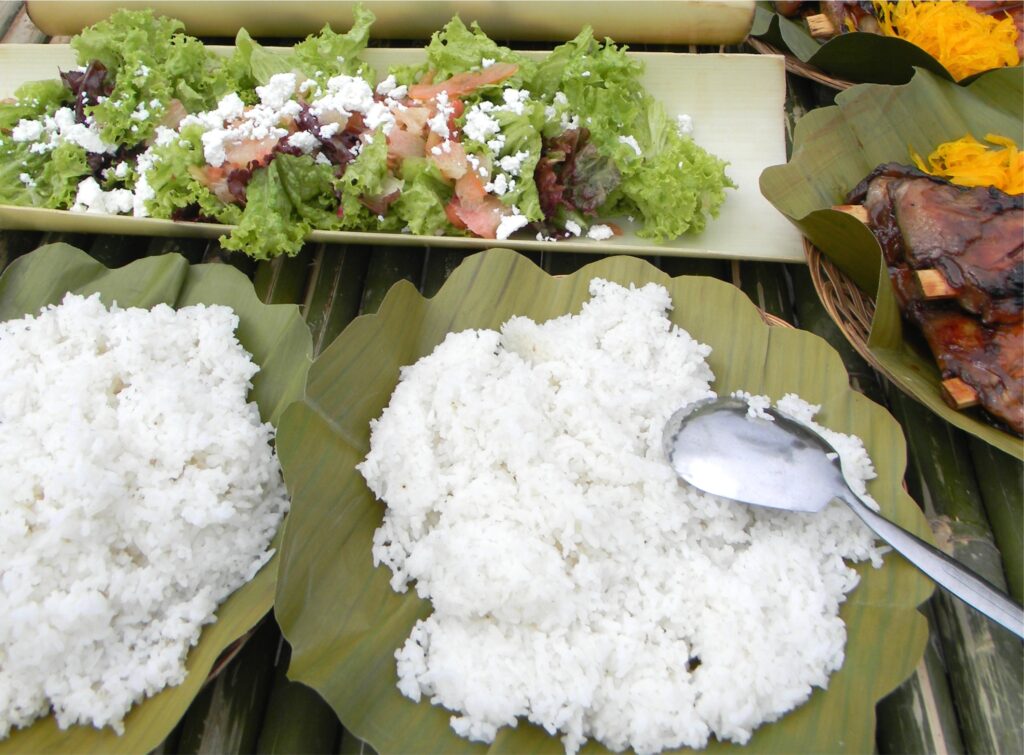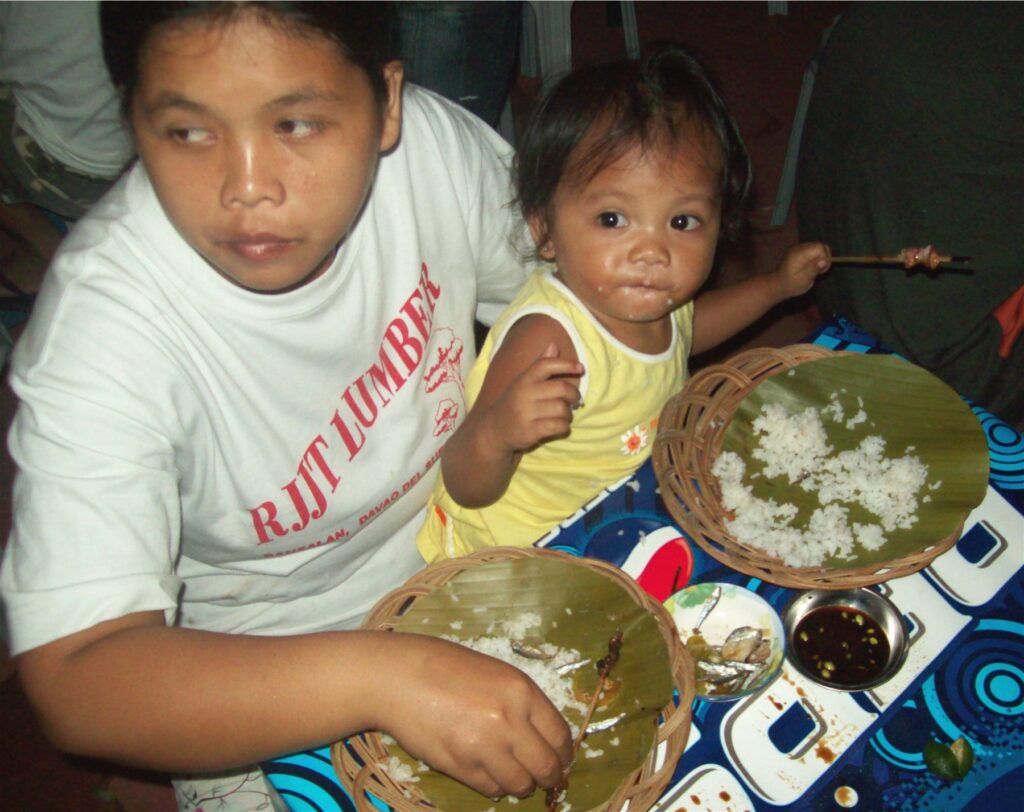Text and Photos by Henrylito D. Tacio
“Rice is the principal food for over 60% of mankind,” said the Laguna-based International Rice Research Institute (IRRI). Rice is particularly important to Asia, where over half of the world’s population lives.
In the Philippines, rice is the staple food of Filipinos, together with fish. “If we did not have rice, our deepest comfort food, we would probably feel less Filipino,” the late food columnist Doreen Fernandez once said.
On average, Filipinos consume 114-120 kilograms of rice per capita per year. That’s almost double the world average of 65 kilograms per capita per year, according to Dr. Eufemio Rasco, Jr., former director of the Philippine Rice Research Institute.
We are indeed rice-eating people. It’s no wonder why we observe the National Rice Awareness Month (NRAM) every November pursuant to Presidential Proclamation No.
524, s.2004.
The Philippine Rice Research Institute (PhilRice), a line agency of the Department of Agriculture (DA), is urging the public “to consume healthier rice produced by Filipino farmers in the month-long celebration, which kicks off on November 8.
“The celebration raises awareness on the importance of healthier forms of rice that are locally produced such as pigmented and brown rice with the theme, ‘Be RICEponsibly healthy,'” said PhilRice, which is leading the celebration.
Golden rice is also being introduced during the celebration. Golden rice is a type of rice that contains beta carotene (pro-vitamin A, a plant pigment that the body converts into vitamin A as needed). This compound is what gives this grain its yellow-orange or golden color, hence its name.
According to the Bureau of Agricultural Statistics, Filipinos spend more on rice than any other food. A survey conducted by the line agency of the Department of Agriculture showed that Filipinos, especially those from low-income households, are depending solely on rice more than ever for their daily dietary energy supply and dietary protein because it remains the most affordable food in the country.
But what do you get in rice?
Nutritionists claim rice contains carbohydrates, protein, minerals, vitamins, and fiber. Most of the white rice available in the supermarket is enriched, which means it is supplemented with iron, niacin, and thiamine.
PhilRice’s Dr. Marissa V. Romero, a food scientist, said that the health benefits of rice depend on its type.
“White or milled or polished rice is a good source of carbohydrates that provide the energy needed in our daily functions. It also contains 6-10% protein. Unfortunately, this kind of rice has a relatively high glycemic index (GI), which indicates a faster conversion of carbohydrates to sugars, particularly glucose,” she explained.

Rice and viand 
More rice please
Dr. Romero recommends the consumption of brown or unpolished rice as it has more fiber, minerals, and vitamins, particularly B vitamins. Brown rice also has a lower GI than white rice.
“This type of rice is rich in nutrients because its bran is kept intact. Thus, its consumption could help prevent obesity and the onset of lifestyle diseases, as shown by some clinical studies,” she said.
A Harvard University study found out that brown rice can lower the risk of developing diabetes. Researchers drew on data from over 200,000 subjects and found that those who ate five or more servings of white rice a week had a 17 percent increased risk of developing type 2 diabetes compared with those who rarely ate white rice. What’s more, they found that those who ate brown rice regularly were overall less likely to develop diabetes.
“When we refine rice, we strip away the majority of many of the nutrients,” says Dr. Walter Willet, a co-author on the study, “including magnesium, chromium and other minerals and vitamins. You’re left with a form of starch that is rapidly broken down, leads to greater spikes in blood sugar, and increases the demand for insulin. Over time this exhausts the pancreas and leads to diabetes.”
Meanwhile, pigmented rice, such as black or red rice, contains phytochemicals in the bran. “These phytochemicals have high antioxidant activity that strengthens our bodies against chronic lifestyle diseases. They scavenge free radicals, which usually destroy body cells and cause health complications such as poor eyesight, diabetes, atherosclerosis (blood flow restriction due to fat buildup), and cancer,” she said.
What about golden rice? Studies show that a cup of cooked golden rice can provide 30-50% Estimated Average Requirement of vitamin A for pre-school children and two cups for school children and adults.
The vitamin A-enriched rice has recently been granted biosafety approval for commercial propagation. Following this approval, PhilRice is now working on the remaining few important steps, such as the varietal registration and seed increase.
Once these are completed, golden rice will be deployed through the market and program-based approaches to promote nutrition in the diet of the Filipinos, especially in this time of the pandemic.
Inaugural deployment of golden rice will be administered by the third quarter of 2022 in areas with a high prevalence of vitamin A deficiency.
As we celebrate NRAM, PhilRice reminds the public to avoid wastage to help achieve rice security. The 2018 Household Food Consumption Survey of the Food and Nutrition Research Institute showed that a household wastes 72% or 66.8 grams of cereal products and cereals, including rice, on a plate.

